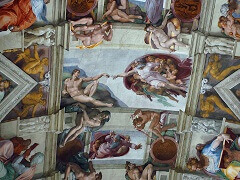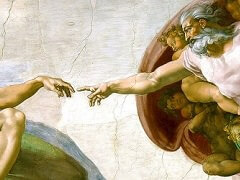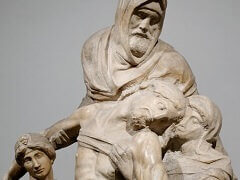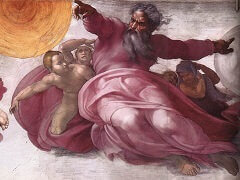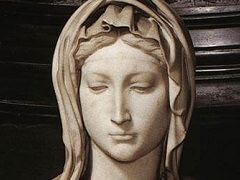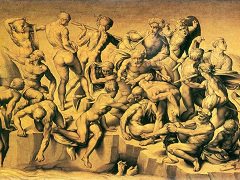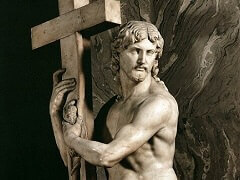Bacchus, by Michelangelo

At the age of 21 Michelangelo went to Rome for the first time. We still possess two of the works he created in this period (Bacchus and Pieta); others must have been lost for he spent five years there.
The statue of Bacchus was commissioned by the banker Jacopo Galli for his garden and he wanted it fashioned after the models of the ancients. The body of this drunken and staggering god gives an impression of both youthfulness and of femininity. Vasari says that this strange blending of effects is the characteristic of the Greek god Dionysus. But in Michelangelo's experience, sensuality of such a divine nature has a drawback for man: in his left hand the god holds with indifference a lionsksin, the symbol of death, and a bunch of grapes, the symbol of life, from which a Faun is feeding. Thus we are brought to realize, in a sudden way, what significance this miracle of pure sensuality has for man: living only for a short while he will find himself in the position of the faun, caught in the grasp of death, the lionskin.
The statue was transferred to Florence in 1572.


